Sitting up in the mountains about 150 kilometres northwest of Yogyakarta, the Dieng Plateau is absolutely stunning: rolling hills terraced with vegetable gardens as far as the eye can see, boiling pits of mud and coloured lakes. This place has it all and surprisingly few foreigners visit outside of the peak season. In fact, whenever we’ve been there, we haven’t seen one other independent traveller although your luck may vary dependent on the time of year you’re there. Of course there are a few foreigners around on private tours, but even they are few and far between.
So what does this mean? Unless you visit in June, July or August, you are going to feel like an modern day intrepid explorer. Come in the peak season and you’ll have a different experience which will be more convivial and shared with new friends.
The main attractions in Dieng are the numerous temples and the geothermal area around Kawah Sikidang. These attractions form a simple loop which can be walked over the course of half a day. The first stop is usually the Arjuna complex, a group of temples built in the eighth century and reported to be some of the oldest in Java. The setting of these temples is stunning with mist-shrouded steep hills on all sides and farms surrounding the immediate area.
From the Arjuna complex, a short walk across the farmland takes you to Candi Gatokaca, just another old Hindu temple, but this time with a new view across the farms to the town of Dieng.
Next stop is Candi Bima, a further 800 metres down the road from Candi Gatokaca. It’s the biggest of the temples in the area, but after having seen the previous temples, it feels like “just another temple”. And it is unless you’re into ancient Hindu temple history.
Taking the turn off at Candi Bima takes you 800 metres to Kawah Sikidang, which for many will be the highlight of the circuit with its bubbling mud pit and strange hot earth. There are in fact two pits at Kawah Sikidang worth seeing, but the best one is filled with steaming mud which boils vigourously. Other features in the area include hot streams, strange small holes which are very hot and sections of earth with gas seeping out of them which is sometimes also hot. It’s all crazy stuff and fascinating to explore. Also, the fried potatoes, tofu and tempe at the nearby warungs are a godsend and a fantastic pick-me-up.
The last stop on the loop is Telaga Warna which translates in English to coloured lake. We don’t want to criticise the person who came up with the name, but surely they could have been more creative! Anyway, the lake is simply a big blue thing surrounded by forest with a tall mist covered mountain as a backdrop. It’s pretty, but most people will spend about 10 minutes here before heading back to the “comfort” of their rooms.
Temperatures in Dieng can be icy — literally. Frosts can occur year round, but are particularly frequent during June, July and August when overnight temperatures often drop below zero. During the day when walking around, it’s not necessary to be rugged up, but a light jacket and jeans are a good idea. At night, most homestays and guesthouses are positively freezing as there is usually no in-room heating. In addition to this, many homestays have tiled floors, meaning if you have to walk to the toilet from your bed which is piled high with blankets, every ounce of warmth will be sucked through the soles of your feet. Expect to breathe steam from your mouth during the night.
All the attractions on the small loop can be visited on a daytrip from Yogyakarta if you hire a motorbike, but it is a long, long day and it is quite likely that it will rain along the way as you’ll have to navigate through mountains. Factor in about 12 hours on the motorbike. By far the best way to see the loop is on foot and the only way to do this practically is to stay in town at one of the many homestays. Accommodation is usually around the 150,000 rupiah mark for a clean room with private bathroom or cheaper if you’re happy to share a bathroom.
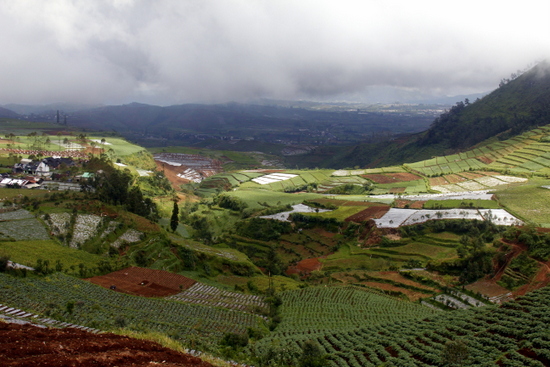
Rolling hills of Dieng.
However you see the Dieng Plateau, it is definitely worth a visit; aside from the things we have mentioned here, a bunch of other activities can only be done justice if you stay in the town of Dieng itself.

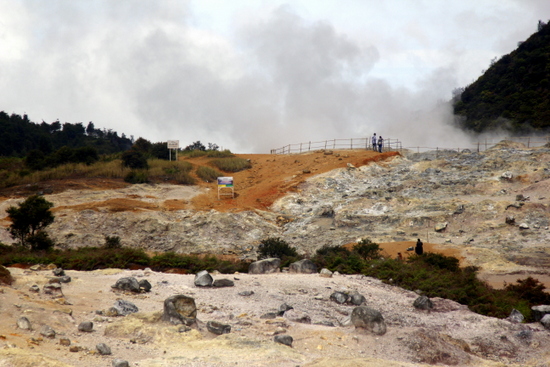
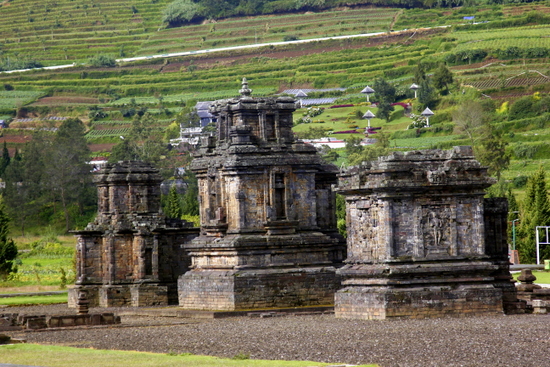

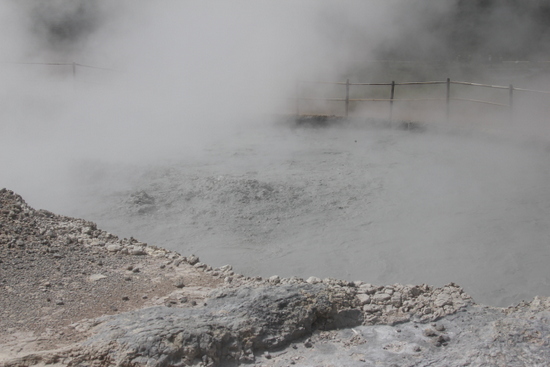
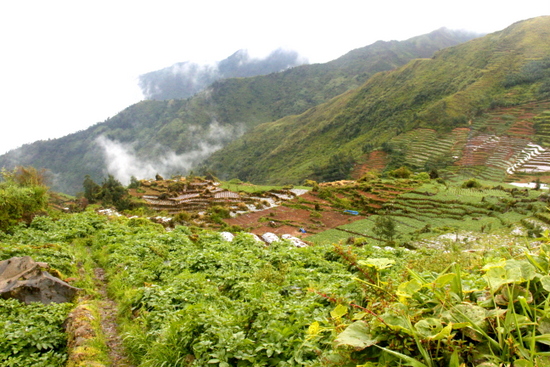
Tidak ada komentar:
Posting Komentar